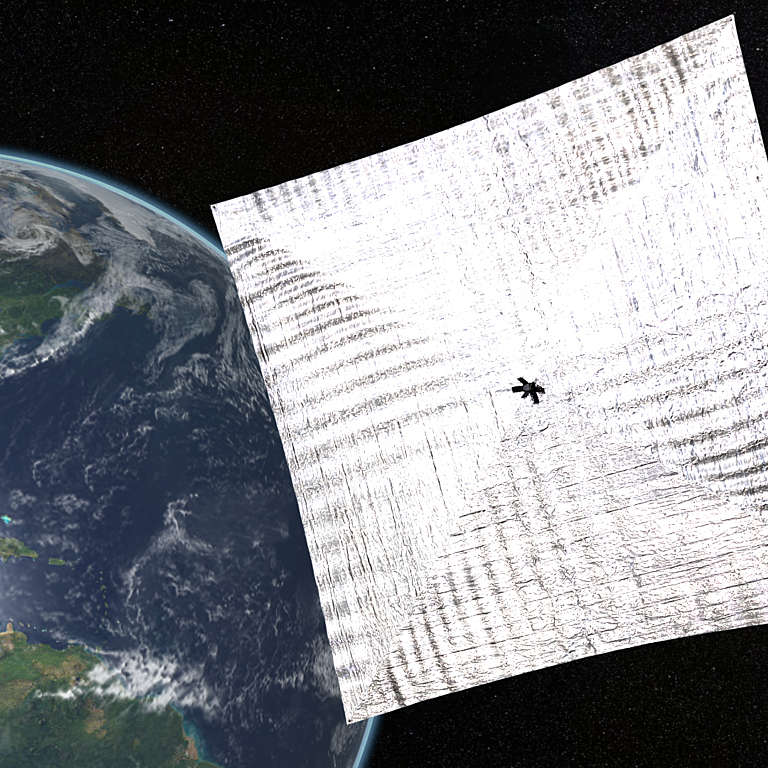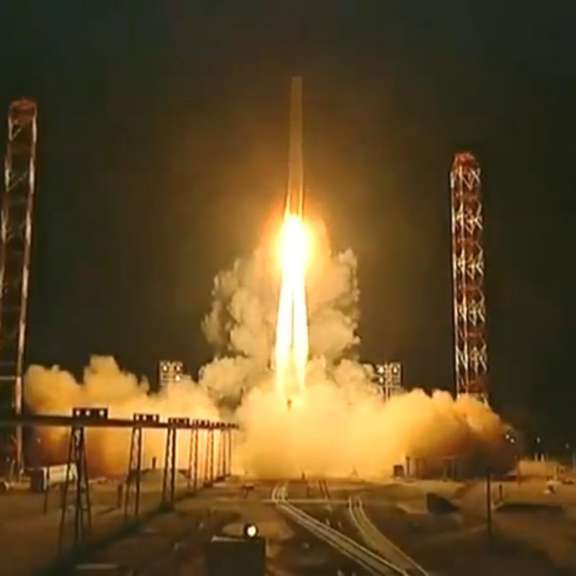All
All
Stories, updates, insights, and original analysis from The Planetary Society.
PlanetVac: Sucking Up Planetary Regolith
Learn about the Planetary Society’s newest project: PlanetVac, with Honeybee Robotics, aims to prototype and test in a huge vacuum chamber a new way to sample planetary surfaces that could be used for sample return or for in situ instruments.
DPS 2012: Future impact risks
Continuing my writeup of notes from last week's Division for Planetary Sciences meeting: presentations on the risks of future asteroid impacts. How much risk do we face, and what are the appropriate actions to take in the face of that risk?
First Planet Discovered in Alpha Centauri System
European astronomers have made the first planetary discovery in the closest-to-Earth Alpha Centauri star system. Here is some information about the discovery, and insights from Yale Astronomer Debra Fischer, who leads another Alpha Centauri planet search partially supported by The Planetary Society.
Shoemaker NEO Winner Finds Close Fly By Asteroid
Gary Hug used his Shoemaker NEO grant provided camera to find 2012 SY49 which flew by Earth at about two lunar distances last week. The tens of meters wide asteroid is a low-probability possible Earth impactor in the future.
Saving the World: Established 1997
The Planetary Society Shoemaker NEO grants celebrate their 15th anniversary of helping to find and track near Earth asteroids. Here's a quick review of the program, and updates on our four multiple-grant winners.
Optical SETI Gets a Major Upgrade
The Planetary Society Optical SETI Telescope in Harvard, Massachusetts just got a major upgrade of its electronics.
Planetfest 2012 Was a Huge Success
Planetfest 2012 ended in the best possible way: the Curiosity rover touched down safely on the surface of Mars. In our ballroom, almost two thousand people leapt to their feet and provided thunderous applause to accompany the joyous celebration at mission control.
Zapping Rocks with Lasers to Save the World
The Planetary Society Laser Bees project in Scotland is studying in the lab a potential new technique for deflecting dangerous asteroids: laser ablation.
Hunting Asteroids from a Field in Kansas
TPS Shoemaker NEO Grant Winner Gary Hug hunts near Earth objects from his back yard in Kansas. NPR's Morning Edition picked up on this fascinating story.
LightSail presented at Aerospace Mechanisms Symposium
Chris Biddy from Stellar Exploration Inc. presented information about our LightSail project at the 2012 Aerospace Mechanisms Symposium.
Third Martian Anniversary for Mars Climate Sounder
May 16, 2012 is the third martian anniversary of the start of Mars Climate Sounder (MCS) observations from Mars Reconnaissance Orbiter. MCS started measuring the atmosphere of Mars three Mars years ago, on September 24, 2006. We can now compare the weather and behavior of the atmosphere in three different years, and find the temperature differences to be surprisingly large.
More Evidence for Impact Origin for Colombia’s Vichada Structure
Evidence continues to pile up that the Rio Vichada structure in Colombia is indeed the largest impact structure in South America.
Planets around Alpha Centauri?
Do planets circle our closest stellar neighbors, the system loved by science fiction: Alpha Centauri? We don’t know. But, Debra Fischer, Julien Spronck, and their colleagues at Yale University, in part with Planetary Society support, are trying to find out.
La Sagra Observatory discovers very near-Earth asteroid 2012 DA14
With a new CCD camera configured to shoot rapid, short exposures bought with a Planetary Society Shoemaker NEO Grant we caught near-Earth asteroid 2012 DA14.
Phobos-Grunt Failure Report Released
It appears that Phobos-Grunt was doomed before it launched on November 9, 2011. Cheap parts, design shortcomings, and lack of pre-flight testing ensured that the spacecraft would never fulfill its goals.
Official Phobos-Grunt Failure Report Released
Roscosmos, the Russian Space Agency, has released its official report concerning the failure of the Phobos-Grunt spacecraft, which fell back to Earth from orbit on January 15 after failing to ignite the engines that were to take it to the largest Martian moon.
Watch this week's Google+ Space Hangout
This week's lineup is a largely astronomical crowd so most of the conversation concerned dark matter and boiling exoplanets and imaging the black hole at the center of our galaxy.
Phobos-Grunt is no more
Phobos-Grunt has returned to Earth, a lot sooner than it should have. Yesterday, at approximately 17:45 UT, the Russian spacecraft and its passengers, including a Chinese orbiter and the Planetary Society's LIFE experiment, descended into Earth's atmosphere.
News brief: Phobos-Grunt has fallen to ground
The Russian military is stating that at 17:45 UT, Phobos-Grunt fell into the Pacific Ocean.
Reflections on Phobos LIFE
We explore space for the noblest goals of science and exploration, and we often persevere in spite of challenges. But space exploration is fraught with bad things happening, or, to use the technical term, ouchies. The Planetary Society's Phobos LIFE biomodule will re-enter the Earth's atmosphere in the next few days with the rest of the Phobos-Grunt mission.


 Explore Worlds
Explore Worlds Find Life
Find Life Defend Earth
Defend Earth


 Sun
Sun Mercury
Mercury Venus
Venus Earth
Earth Mars
Mars Jupiter
Jupiter Saturn
Saturn Uranus
Uranus Neptune
Neptune Small Bodies
Small Bodies
















